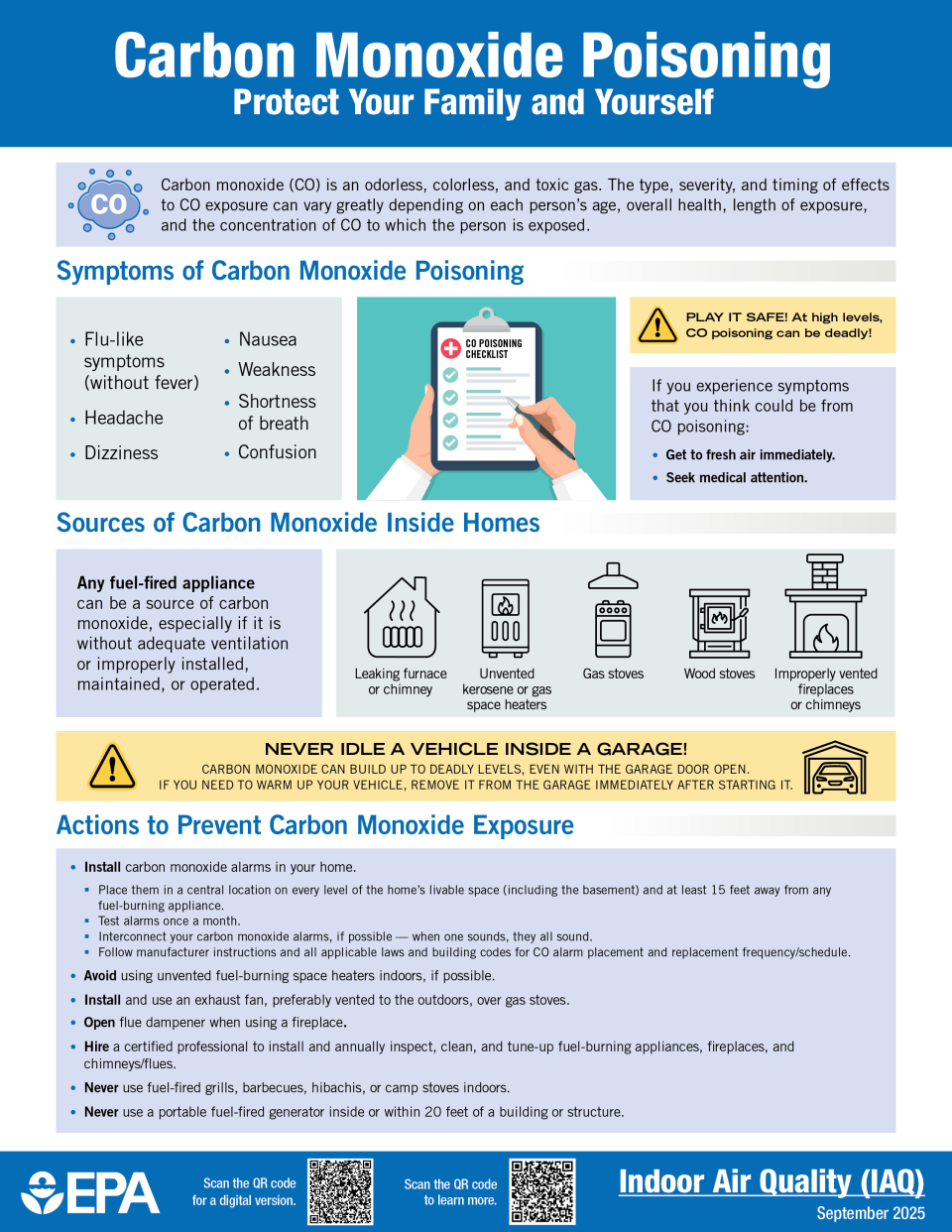Carbon Monoxide Poisoning: Protect Your Family and Yourself Factsheet
This factsheet discusses what is carbon monoxide, sources of carbon monoxide inside homes, symptoms of carbon monoxide poisoning, and actions you can take to prevent potentially deadly levels of carbon monoxide in your home.
- Download the factsheet: Carbon Monoxide Poisoning: Protect Your Family and Yourself Factsheet (pdf)
- Text version of the factsheet

Text Version: Carbon Monoxide Poisoning: Protect Your Family and Yourself Factsheet
Carbon Monoxide Poisoning: Protect Your Family and Yourself Factsheet
Carbon monoxide (CO) is an odorless, colorless, and toxic gas. The type, severity, and timing of effects to CO exposure can vary greatly depending on each person’s age, overall health, length of exposure, and the concentration of CO to which the person is exposed.
Symptoms of Carbon Monoxide Poisoning
- Flu-like symptoms (without fever)
- Headache
- Dizziness
- Nausea
- Weakness
- Shortness of breath
- Confusion
PLAY IT SAFE! At high levels, CO poisoning can be deadly!
If you experience symptoms that you think could be from CO poisoning:
- Get to fresh air immediately.
- Seek medical attention.
Sources of Carbon Monoxide Inside Homes
Any fuel-fired appliance can be a source of carbon monoxide, especially if it is without adequate ventilation or improperly installed, maintained, or operated.
- Leaking furnace or chimney
- Unvented kerosene or gas space heaters
- Gas stoves
- Wood stoves
- Improperly vented fireplaces or chimneys
NEVER RUN A VEHICLE INSIDE A GARAGE!
Carbon monoxide can build up to deadly levels, even with the garage door open. If you need to warm up your vehicle, remove it from the garage immediately after starting it.
Actions to Prevent Carbon Monoxide Exposure
- Install carbon monoxide alarms in your home.
- Place them in a central location on every level of the home’s livable space (including the basement) and at least 15 feet away from any fuel-burning appliance.
- Test alarms once a month.
- Interconnect your carbon monoxide alarms, if possible — when one sounds, they all sound.
- Follow manufacturer instructions and all applicable laws and building codes for CO alarm placement and replacement frequency/schedule.
- Avoid using unvented fuel-burning space heaters indoors, if possible.
- Install and use an exhaust fan, preferably vented to the outdoors, over gas stoves.
- Open flue dampener when using a fireplace.
- Hire a certified professional to install and annually inspect, clean, and tune-up fuel-burning appliances, fireplaces, and
chimneys/flues. - Never use fuel-fired grills, barbecues, hibachis, or camp stoves indoors.
- Never use a portable fuel-fired generator inside or within 20 feet of a building or structure.
